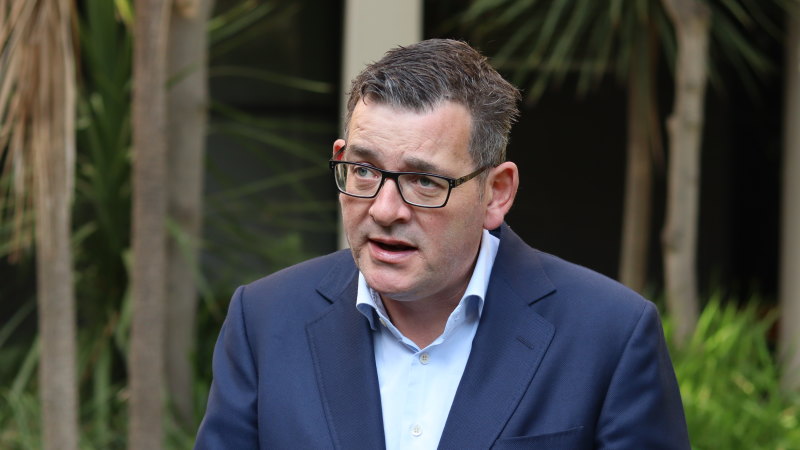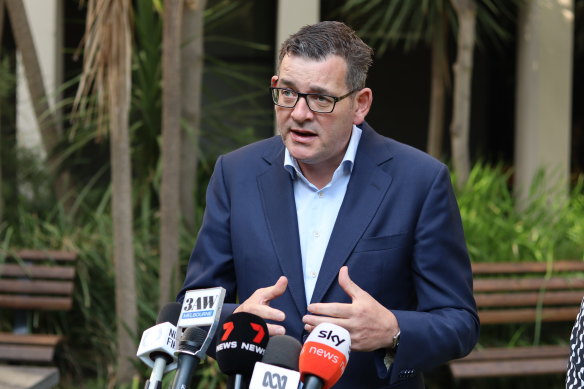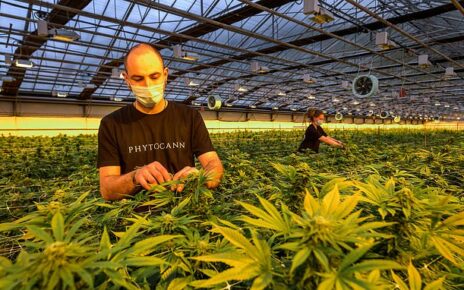It’s a financial reckoning that has been years in the making. With just over a month before the state budget is handed down, Premier Daniel Andrews has reportedly gone cap in hand to Canberra looking for extra funding to prop up Victoria’s coffers.
This would hardly come as a surprise to those watching closely. In March, state Treasury’s budget update showed the interest bill on government debt topping $1.8 billion during the final six months of 2022, a jump of $400 million in just one year. While the Reserve Bank’s rapid increase in interest rates to fight inflation is partly to blame, there is a bigger problem at hand.
Daniel Andrews is looking to Canberra to help it out of its growing budget woes. Credit: Gus McCubbing
By the end of 2022, Victoria’s net debt had officially climbed above $100 billion for the first time. At $104.2 billion – equivalent to 18.2 per cent of the state economy – Victoria has the highest debt in proportional terms of all the states. And while a good amount of that debt can be sheeted home to stepped-up borrowing during the pandemic, the government’s spending on its “big build” agenda has also played a major role in pushing the state into the red at unprecedented levels.
To deal with the ballooning debt, the Andrews government is now finding itself having to slash costs – something it argued a month out from last year’s state election was not part of its agenda. State Treasurer Tim Pallas claimed at the time that the government’s staged plan to get the budget on track was working, while accusing the opposition of planning to implement deep spending cuts if it won office.
It was a potent political line. Pallas asserted that “Labor governments invest in the people and the projects we need to grow the economy – without the savage cuts we’ve seen time and time again from Matthew Guy’s Liberals”.
Fast-forward to last month, and it was revealed public service bosses were told by the state government to hand in proposals to slash staff numbers by as much as 10 per cent – a move that could mean more than 5000 public servants lose their jobs.
What a difference an election win can make. With the premier not having to go back to the polls until late 2026 he, no doubt, sees the upcoming budget as an opportunity to make some tough calls.
While The Age welcomes some tightening of the budget, it’s a legitimate question to ask whether the level of cuts required has not been exacerbated by the government’s continuous rollout of new major projects that more often than not suffer from major cost blowouts. That played out at the last election, with Labor committing to $3.3 billion worth of recurrent spending and about $8.4 billion worth of capital spending. The final cost is sure to be much more.
In the past, Australian governments have been rightly criticised for their failure to invest adequately in the infrastructure required to cater for an expanding population. That could not be said about the Andrews government. Particularly during the pandemic, such investment was a valuable means of keeping activity going. But too often the enormous cost of each project never appears to get in the way of maintaining the government’s reputation for “getting things done”.
While The Age accepts there is a level of government debt that is manageable and can be covered by future revenue, the premier has too often shut his eyes to the long-term fiscal reality of embarking on such ambitious spending commitments without putting in place adequate budget cuts or revenue raising measures.
The government will leave a substantial legacy of new infrastructure across Melbourne. Much of it will serve the city well. But it’s well past time that it ensures it does not also leave a corresponding legacy of financial profligacy.
Patrick Elligett sends an exclusive newsletter to subscribers each week. Sign up to receive his Note from the Editor.
Most Viewed in National
From our partners
Source: Read Full Article


